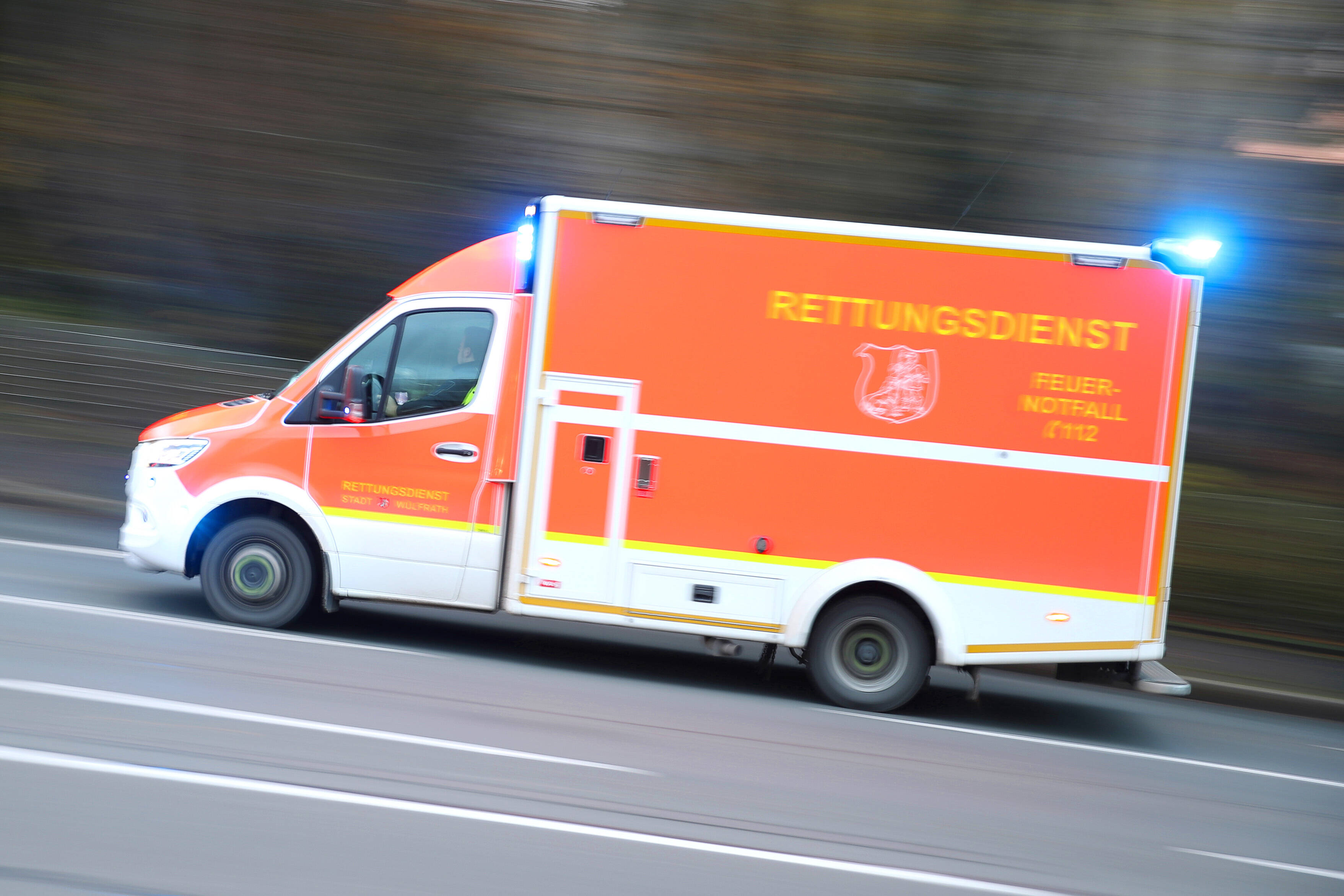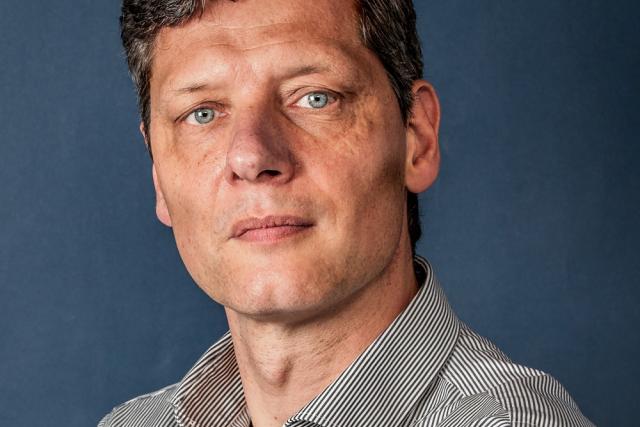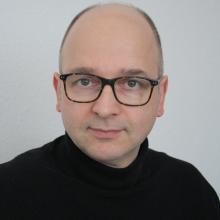

In an emergency, every minute counts: Decision support for emergency service planners
Mathematical optimization – that sounds like something very abstract. And it certainly looks that way on the surface: you have equations and inequalities with many variables that are supposed to take on integer values. However, the solution methods are based on mathematically and as well as practically relevant procedures that can be applied in many areas of everyday life. Optimization is about minimizing or maximizing an objective function under given conditions (known as constraints). This simply means finding the best possible solution to a problem. Sometimes you want as much of something as possible – that's maximization. Sometimes you want as little of something as possible – that's minimization.
In a logistics company, packing problems are omnipresent. For example, you have beverage crates of a certain size that need to be stacked in as few containers as possible to reduce transport costs. The objective function is the number of containers needed to transport all the crates from A to B. The constraint is that each container can only hold as many crates as it can fit. Logical! Maximization is also important in the design of a wind turbine, which should generate as much electricity as possible. The design can be described using parameters such as diameter, length, blade geometry, and so on. A typical objective function in this example is the efficiency of the turbine, i.e., the energy generated at a given airflow.
Emergency power supply suffers from cost pressure
Mathematical optimization is not only useful in logistics and energy production, but also in healthcare. Mathematician Sven Oliver Krumke uses optimization techniques to improve emergency medical care. If someone has a heart attack or there is a car accident, the emergency doctors at a nearby rescue station are alerted. They jump into the ambulance and drive off. Unfortunately, emergency medical care in this country is not always the best. “The basic problem is the constantly increasing cost pressure in the healthcare system,” explains Krumke. As a result, financial resources for emergency care are becoming increasingly scarce. So, it's important to organize everything as well as circumstances allow. This is a classic optimization task that Krumke has been working on since 2021 as part of the ONEPlan project, which is funded by the Rhineland-Palatinate Ministry of the Interior and Sport. Krumke and his team had already spent years researching the emergency doctor problem in a previous project.
Mathematically, it can be simplified as follows: There are many regions “r” and several rescue stations at locations “s1, s2,” and so on. From there, emergency doctors must be able to reach the scene within a time limit of, for example, 20 minutes. Because financial resources are limited, as few emergency doctors as possible must be distributed among the rescue stations – that is the objective function: the number of emergency doctors. In addition, there are constraints. There must be a minimum number of emergency doctors – as many as are needed for the statistically expected emergencies. This minimum number is referred to as “b.” In addition, each emergency doctor should be assigned a maximum of ‘q’ emergencies – as many as they can handle.
Decimal numbers are not allowed
The emergency doctor problem must produce whole number results. “This means that the number of emergency doctors at each location must be an integer number – 2, 3, or 4,” says Krumke. “Assigning 2.31 emergency physicians to a location would be pointless.” Second characteristic: This is a linear problem. In the constraints, the variables therefore only appear linearly – there are no nonlinear mathematical terms such as squares or logarithms. This is different from the turbine, where nonlinear terms are needed to describe air pressure and flow.
Uncertainties must also be incorporated into the whole system, in this case the actual number of emergencies per region at a specific point in the future. “We cannot specify this number with 100% certainty. However, we can use historical data, such as the average value for the last two to three years, to make an educated estimate.” The result is an interval, i.e., a range within which the actual number of emergencies in the region can be reliably estimated. This interval is incorporated into the equations via so-called uncertainty sets—yet more variables that are needed. This makes it more difficult mathematically, of course, but also much more realistic.
Model simplifies reality
But how does this integer linear optimization model actually help to improve emergency care? To answer this question, Krumke is developing simulation models based on the optimizations, which are essentially virtual representations of real emergency care in a region under certain conditions. “In principle, these simulations are still a simplification of reality, yet a very good one” says Krumke. Every single emergency vehicle and every single emergency is realistically mapped to a (moving) target in a road network. When an emergency call comes in, a virtual emergency vehicle sets off. “Real” travel times for known routes are woven into the simulation. To ensure that these reflect reality as accurately as possible, the model takes into account parameters such as road surface, gradients, and the time of year and day. All of these factors influence the response. If the emergency call comes in at 4 p.m., rush hour traffic could extend the travel time, for example.
Artificial intelligence (AI) is also at work in the simulation model. More specifically, machine learning, a subfield of AI. This makes it possible to make more accurate predictions. For example, AI predicts how many emergencies will occur in a specific region over the next 48 hours. This is an extremely helpful assistance, according to Krumke. “After all, we have to make decisions about future staffing levels at rescue stations based on incomplete information.” The simulation model also factors in fictional scenarios. For example, it can assume that the number of emergencies will increase by 10 percent over the next five years and give decision support for the future.
Almost half a million people
Such a model is very realistic, and it has to be. After all, it is used as a decision-making aid by those who coordinate and organize emergency services in an area on a daily basis: the dispatchers in the control centers. Rhineland-Palatinate has seven “emergency service areas,” each of which is responsible for a control center. The control center in Landau, for example, manages emergency medical services in the “Southern Palatinate” area. This area stretches from east to west from Wörth am Rhein to Zweibrücken in the Western Palatinate, covers 2,270 square kilometers, and has around 460,000 residents plus tourists.
At the Landau control center, simulations are already part of the technical inventory and are consulted regularly. The planners run the simulation and receive concrete suggestions on how they could allocate the “rescue resources” (vehicles and doctors) differently than before. They can then see what improvements this would bring. For example, if the ambulance leaves the rescue station in Germersheim in the late afternoon, it no longer takes 12 minutes to reach the nearby village of Knittelsheim, but only 10 minutes. If someone is in distress there, every minute counts. Help arrives two minutes earlier. The simulation also shows which staffing levels are appropriate at different times of the day. For example, two emergency doctors are needed at an ambulance station from 8 a.m. to 12 noon. Between 12 noon and 8 p.m., it is quieter, so one doctor is sufficient. Dispatchers can then adjust shift schedules based on such data-driven recommendations.
What happens if a station is closed?
The key point about the simulations is that they help to improve emergency care without necessarily having to increase the number of emergency doctors. “Of course, it would be easier to provide better care with more doctors and more rescue stations – but that's usually not possible due to cost pressures.” The simulations also show what to do if the conditions change, for better or for worse. Where a new additional ambulance station should have to be located if, contrary to expectations, the money were available. Conversely, if an ambulance station has to be closed for financial reasons, the simulation reports which station would have the least impact.
The AI-supported models are not yet perfect. “We are constantly developing them, incorporating new aspects and continuously improving the simulation.” Krumke is currently working on combining the strengths of classic optimization and AI. AI is very good at making predictions, but it struggles when it comes to making decisions based on those predictions, i.e., determining which resources should be used. That's where optimization is still vastly superior.
A question of weighing up the options
Krumke explains why he wants to further develop the simulations in this area: In operational practice, an ambulance must be assigned immediately in an emergency. There is no time to lose. A key question is which ambulance should be dispatched. The ambulance from rescue station A because it could reach the scene fastest? A decision based solely on the time factor may not always be optimal. Unless every minute counts in a specific emergency, it might be better to send the vehicle from rescue station B, even if it takes a little longer. The reason: there are always gaps in the emergency care map – and these must be kept as small as possible because further emergency calls can come in at any moment. If the “second fastest” ambulance is dispatched, these gaps are sometimes easier to close.
"We are dealing with a complex system in which everything is interconnected. If you change something at one rescue station, it can affect many other rescue stations. It's like a ripple effect. So decisions can't be made locally. It's about keeping an eye on the entire service area.“ Krumke will be busy in the near future ”teaching" AI this ability to weigh things up and see the big picture. He hopes to make his simulation models even more accurate – so that emergency care remains as efficient as possible in times of budget constraints.

Would you like to learn more about mathematical optimization?
You will find more information in the selection of scientific articles or in media reports on Sven O. Krumke's research:
S. O. Krumke, H. N. Noltemeier, „Graphentheoretische Konzepte und Algorithmen“, B.G. Teubner 2012
S. O. Krumke, E. Schmidt, and M. Streicher, „Robust Multicovers with Budgeted Uncertainty“, European Journal of Operational Research, Volume 274, Issue 3, May 2019, Pages 845-857
S. M. Dimant, and S. O. Krumke, „On Approximating Partial Scenario Set Cover“, Theoretical Computer Science, Volume 1023, January 2025.
Interview "Fußball braucht Mathematik" on SWR, 13.12.2023
>> SEE INTERVIEW
Report "Cleverer Code für Gelbe Engel" on Deutschlandfunk, 27.07.2002
>> GO TO REPORT
Article "Die Wurzeln des Fortschritts" in Bild der Wissenschaft, 18. März 2008
>> SEE ARTICLE

These topics might also interest you:

